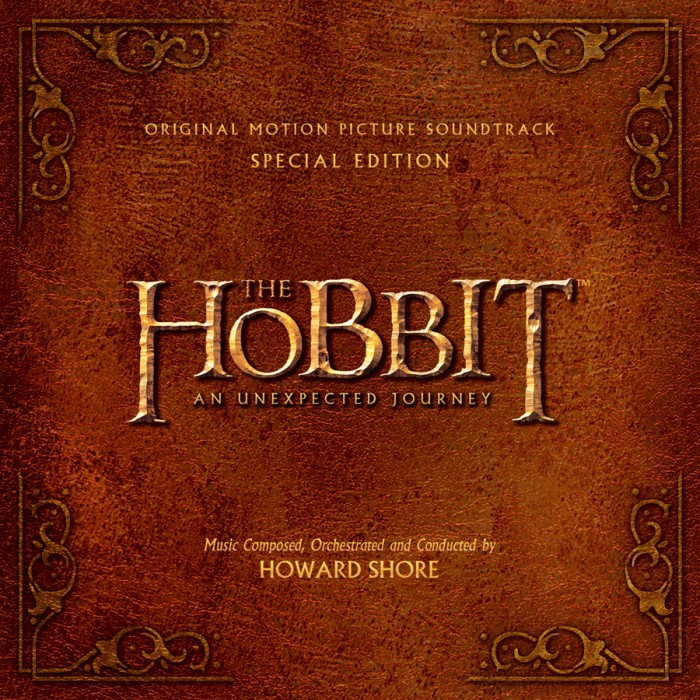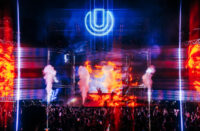
11 December 2012, Singapore – From Academy Award-winning filmmaker Peter Jackson comes “The Hobbit: An Unexpected Journey,” the first of a trilogy of films adapting the enduringly popular masterpiece The Hobbit, by J.R.R. Tolkien. The film releases in cinemas here on 13 December 2012.
The three films tell a continuous story set in Middle-earth 60 years before “The Lord of the Rings,” which Jackson and his filmmaking team brought to the big screen in the blockbuster trilogy that culminated with the Oscar®-winning “The Lord of the Rings: The Return of the King.”
The adventure follows the journey of title character Bilbo Baggins, who is swept into an epic quest to reclaim the lost Dwarf Kingdom of Erebor from the fearsome Dragon Smaug. Approached out of the blue by the Wizard Gandalf the Grey, Bilbo finds himself joining a company of 13 Dwarves led by the legendary warrior Thorin Oakenshield. Their journey will take them into the Wild, through treacherous lands swarming with Goblins, Orcs and deadly Wargs, as well as a mysterious and sinister figure known only as the Necromancer.
Although their goal lies to the East and the wastelands of the Lonely Mountain, first they must escape the Goblin tunnels, where Bilbo meets the creature that will change his life forever…Gollum.
Here, alone with Gollum, on the shores of an underground lake, the unassuming Bilbo Baggins not only discovers depths of ingenuity and courage that surprise even him, he also gains possession of Gollum’s “precious” ring that holds unexpected and useful qualities… A simple, gold ring that is tied to the fate of all Middle-earth in ways Bilbo cannot begin to know.
Ian McKellen returns as Gandalf the Grey, the character he played in “The Lord of the Rings” Trilogy, with Martin Freeman in the central role of Bilbo Baggins, and Richard Armitage as Thorin Oakenshield. Also reprising their roles from “The Lord of the Rings” in “The Hobbit” Trilogy are: Cate Blanchett as Galadriel; Ian Holm as Old Bilbo; Christopher Lee as Saruman; Hugo Weaving as Elrond; Elijah Wood as Frodo; and Andy Serkis as Gollum. The international ensemble cast of the Trilogy also includes James Nesbitt, Ken Stott, Sylvester McCoy, Barry Humphries, Aidan Turner, Dean O’Gorman, Graham McTavish, Adam Brown, Peter Hambleton, John Callen, Mark Hadlow, Jed Brophy, William Kircher, Stephen Hunter, Lee Pace, Benedict Cumberbatch, Manu Bennett and Conan Stevens.
The screenplay for “The Hobbit: An Unexpected Journey” is by Fran Walsh & Philippa Boyens & Peter Jackson & Guillermo del Toro, based on the novel by J.R.R. Tolkien. Jackson also produced the film, together with Carolynne Cunningham, Zane Weiner and Fran Walsh. The executive producers are Alan Horn, Toby Emmerich, Ken Kamins and Carolyn Blackwood, with Boyens and Eileen Moran serving as co-producers.
Under Jackson’s direction, “The Hobbit: An Unexpected Journey” was shot in 3D 48 frames-per-second and is being released in High Frame Rate 3D (HFR 3D) in select theaters, other 2D and 3D formats, and IMAX. Production took place at Jackson’s own facilities in Miramar, Wellington, and on location around New Zealand. Post production took place at Park Road Post Production in Wellington.
The creative behind-the-scenes team returning to Jackson’s crew included director of photography Andrew Lesnie, production designer Dan Hennah, conceptual designers Alan Lee and John Howe, editor Jabez Olssen, and makeup and hair designer Peter Swords King. The costumes were designed by Ann Maskrey, Richard Taylor and Bob Buck. Taylor also oversaw the design and production of armour, weapons, creatures and special makeup, which were once again made by the award-winning Weta Workshop. Weta Digital took on the visual effects for the film, led by senior visual effects supervisor Joe Letteri. The visual effects supervisor was Eric Saindon, with David Clayton serving as animation supervisor. The film features the song “Song of the Lonely Mountain,” performed by Neil Finn.
New Line Cinema and Metro-Goldwyn-Mayer Pictures Present a WingNut Films Production, “The Hobbit: An Unexpected Journey.” All three films in “The Hobbit” Trilogy, also including “The Hobbit: The Desolation of Smaug,” and the final film, “The Hobbit: There and Back Again,” are productions of New Line Cinema and Metro-Goldwyn-Mayer Pictures (MGM), with New Line managing production. Warner Bros. Pictures is handling worldwide theatrical distribution, with select international territories as well as all international television distribution being handled by MGM.
The Trailer
THE NUMBERS
1 Hobbit
1 Gollum
1 Dragon
1 crew member whose sole job on set was to look after prosthetic hands
2 filming units
2.6 average days shooting on a given set
3 Wizards
3 Trolls
4 tons of silicon used to generate the facial prosthetics
5 complete hair, make-up, prosthetics and wardrobe for each of the 13 Dwarves
5 average number of doubles used for each main character, including scale, stunt and riding doubles.
7 km length of toupe tape, which attaches beards to faces, used on the production
10kg human hair for wigmaking
10.4 average days it took to renew a studio with a new set
13 Dwarves
14 tons of silicone used to mold all of the armor and weapons for all cultures
60 2nd unit studio crew
65 number of people it took—actors, doubles and stunt men—to portray 13 Dwarves
91 wigs created for the Dwarves
99 studio sets built
100+ Hobbit feet for Bilbo
100 total 2nd unit location crew
266 shooting days
300 bottles of spirit gum used in the production
350 off-set crew
450 main unit studio crew
547 traveling weapons for the 13 dwarves
700 main unit crew on location
800 crew traveled on location between 2 units
860 bottles of isopropyl alcohol (to remove prosthetics)
600-700 wigs. Nearly everyone in the film is wigged
2100 approximate number of VFX shots in “The Hobbit: An Unexpected Journey”
8900 number of continuous hours the art department to build, decorate, and tear down sets. This involved different crews working 24/7.
11,862 prosthetics made
The Original Soundtrack

Featuring original music by academy award winner Howard Shore, the OST includes the lead single ‘Song of a Lonely Mountain’ by Neil Finn. The soundtrack is released on 10 December 2012. Produced by WaterTower Music and Decca Records, the soundtrack is available digitally and as a two CD set. A Special Edition of the soundtrack featuring six exclusive bonus tracks, seven extended score cues, and deluxe liner notes are also available.
THE HOBBIT SPECIAL EDITION TRACKLIST
DISC 1:
1. My Dear Frodo
2. Old Friends (Extended Version)
3. An Unexpected Party (Extended Version)
4. Blunt the Knives performed by The Dwarf Cast
5. Axe or Sword?
6. Misty Mountains performed by Richard Armitage and The Dwarf Cast
7. The Adventure Begins
8. The World is Ahead
9. An Ancient Enemy
10. Radagast the Brown (Extended Version)
11. The Trollshaws
12. Roast Mutton (Extended Version)
13. A Troll-hoard
14. The Hill of Sorcery
15. Warg-scouts
DISC 2:
1. The Hidden Valley
2. Moon Runes (Extended Version)
3. The Defiler
4. The White Council (Extended Version)
5. Over Hill
6. A Thunder Battle
7. Under Hill
8. Riddles in the Dark
9. Brass Buttons
10. Out of the Frying-Pan
11. A Good Omen
12. Song of the Lonely Mountain (Extended Version) performed by Neil Finn
13. Dreaming of Bag End
EXCLUSIVE BONUS TRACKS
14. A Very Respectable Hobbit
15. Erebor
16. The Dwarf Lords
17. The Edge of the Wild
THE HOBBIT STANDARD EDITION TRACKLIST
Disc 1:
1. My Dear Frodo
2. Old Friends
3. An Unexpected Party
4. Axe or Sword?
5. Misty Mountains performed by Richard Armitage and The Dwarf Cast
6. The Adventure Begins
7. The World is Ahead
8. An Ancient Enemy
9. Radagast the Brown
10. Roast Mutton
11. A Troll-hoard
12. The Hill of Sorcery
13. Warg-scouts
Disc 2:
1. The Hidden Valley
2. Moon Runes
3. The Defiler
4. The White Council
5. Over Hill
6. A Thunder Battle
7. Under Hill
8. Riddles in the Dark
9. Brass Buttons
10. Out of the Frying-Pan
11. A Good Omen
12. Song of the Lonely Mountain performed by Neil Finn
13. Dreaming of Bag End
Screened in High Frame Rate (HFR)
Besides being screened in 3D, IMAX 3D and Dolby ATMOS, The Hobbit: An Unexpected Journey is playing in High Frame Rate (HFR) in select cinemas here
SHAW THEATRES
Shaw Lido, IMAX Hall (available in HFR IMAX 3D)
Shaw Lido, Orchard, Hall 1
Shaw Lido, Orchard, Hall 4
Serangoon NEX Hall 6
Serangoon NEX Hall 8
GOLDEN VILLAGE
Great World City, GV Grand, Hall 1
City Square, Hall 2
City Square, Hall 6
*New! GV City Square: 180 Kitchener Road #05-02/03, Singapore 208539
FILM GARDE
Bugis+, Hall 8
Interview With Peter Jackson On Shooting Using HFR Format
QUESTION: Why did you shoot The Hobbit Trilogy using the High Frame Rate (HFR) format?
PETER JACKSON: We live in a rapidly advancing digital age. Technology is being continually developed that can enhance and enrich the cinema-going experience. High Frame Rate shooting for a mainstream feature film has only become viable in the last year or two, and yet we live in an age of increasing home entertainment. I started shooting The Hobbit films in HFR because I wanted film audiences to experience just how remarkably immersive the theatrical cinema experience can be.
QUESTION: What is the history of frame rates and why do you think the time has come to increase them in the theater?
PETER JACKSON: Silent movies were shot at somewhere between 16 and 18 frames per second (fps) with hand-cranked cameras. In 1927, when sound came along, the industry needed to agree on a motor-driven, constant camera speed. 35mm film stock is very expensive, so it needs to be as slow as possible. However, the early optical soundtrack required a minimum speed to achieve fidelity of the sound. 24 fps was decided on, and became the industry standard for over 80 years, with cinemas all around the world installing mechanical projectors only capable of projecting at 24 fps. 24 fps was a commercial decision — the cheapest speed to provide basic quality — but it produces movement artifacts, like strobing, flicker and motion blur.
Now, in the digital age, there’s no reason whatsoever to stick to 24 fps. We didn’t get it perfect in
1927. Science tells us that the human eye stops seeing individual pictures at about 55 fps. Therefore, shooting at 48 fps gives you much more of an illusion of real life. The reduced motion blur on each frame increases sharpness and gives the movie the look of having been shot in 65mm or IMAX. One of the biggest advantages is the fact that your eye is seeing twice the number of images each second, giving the movie a wonderful immersive quality. It makes the 3D experience much more gentle and hugely reduces eyestrain. Much of what makes 3D viewing uncomfortable for some people is the fact that each eye is processing a lot of strobing, blur and flicker. This all but disappears in HFR 3D.
QUESTION: Having shot the film using HFR technology, what are your thoughts on the experience?
PETER JACKSON: I think HFR is terrific. As a filmmaker, I try to make my movies immersive. I want to draw the audience out of their seats, and pull them into the adventure. That is the experience I hope to offer moviegoers no matter which format they choose at the theater. While I personally prefer watching The Hobbit: An Unexpected Journey in HFR 3D, I can assure you that every format will provide you with an incredible and immersive experience. HFR 3D is “different” — it won’t feel like the movies you’re used to seeing, in much the same way as the first CDs didn’t sound like vinyl records. We live in an age when cinemas are competing with iPads and home entertainment systems. I think it’s critical that filmmakers employ current technology to increase the immersive, spectacular experience that cinema should provide. It’s an exciting time to be going to the movies.
Related articles














